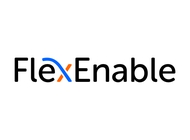- Date 10 May 2016
- Sectors Technology
Innovative smart system design from Cambridge Consultants and Analog Devices
The system combines a low-cost camera with a sophisticated algorithm running on a low-cost processing platform. It is able to calculate which parking spaces are occupied or empty – without the disruption or expense of digging up roads and car parks to install individual sensors and communications for each parking bay.
“Our unique smart system uses machine vision to establish whether each space is free or occupied – with no need for expensive infrastructure,” said Dipak Raval, a commercial director at Cambridge Consultants. “It’s an excellent example of how machine vision can provide a cost-effective way of monitoring occupancy over a wide area, since the camera is able to ‘see’ multiple bays.
“Our deep expertise in algorithm development has enabled us to ensure the technology works in a variety of lighting conditions and can cope with different sizes of cars, trucks and motorcycles – without giving misleading results if pedestrians are standing in a parking space, for example, or shopping trolleys are left behind.”
The search for a parking space can often take up to 20 minutes, parking surveys regularly report – with the average motorist said to waste thousands of hours over their lifetime driving around trying to find a vacant spot. As well as the economic cost of this wasted time, it also adds to pollution and congestion on the roads.
A touch of machine vision, however, could put the motorist back in the driving seat. Drivers could be assigned a parking space as they enter a car park, for example – enabling them to go straight to their allotted spot. Or they could request a specific space in advance if they plan to shop at a particular store – or a specific parking bay outside a building they need to visit in a busy town centre. If the data from the occupancy sensor is combined with number plate recognition, drivers could also be offered automated payment and help with locating their parked car.
“The BLIP platform allows Analog Devices to make significant contributions in emerging Internet of Things (IoT) spaces such as smart buildings and cities, where this is a radical shift from passive to real-time intelligent sensing nodes,” said Michael Murray, general manager of industrial IoT and sensing at Analog Devices.
“We‘re excited to collaborate with Cambridge Consultants on this project. The company’s world-class expertise in complex algorithm development allowed us to algorithmically enable BLIP for an application space that would create a unique solution to relieve a major source of frustration for drivers everywhere.”



